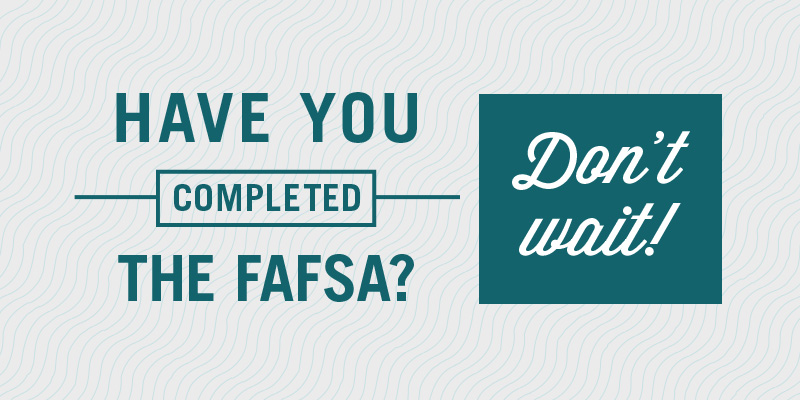Module-2 Financial Wellness
Paying for College
Paying for college is one of the biggest investments you will ever make in your life, right up there with buying a house. This unit will help you determine your cost of attendance, help you understand the FAFSA, give you some financial information to help you manage money better. It’s a larger module with lots of helpful information. Take the time you need to, it’s well worth it.
Money Management
Many college students struggle with money management. High school students spend considerable time learning about social studies, English, mathematics and science, but learn very little about managing a personal budget. Additionally, now that you are “out of the house,” your parent’s wallets might no longer be a reliable source of income and you must assume greater responsibility for managing your expenses and income.
Don’t make the mistake of learning these lessons later in life. Take a Personal Finance class early in your college career and consider the top money-management tips for college students found in this module and on the web. You might also try some software or apps like everydollar.com or mint.com to help manage your money throughout your college career.
Credit Cards
Use, don’t abuse credit cards. You will be solicited to get a credit card, and the choice to open a credit card is personal. If you choose to open a credit card, an important rule is to spend less than you bring in. College is a great time to start building your credit, but it’s also an easy time to spend more than you should. Understand how to responsibly build your credit without overextending yourself. Click here for some tips on effectively managing credit card debt.
Budget
Learn to budget. Most college students wouldn’t know where to begin with the dreaded “B” word. Most of us are worried about planning our monthly budget because we are worried we will run out of money as we know you cannot spend more than you bring in. Zig Ziglar once said, “If you aim at nothing, you will hit it every time.” There is plenty of free budgeting software out there – everydollar.com or mint.com are two. Whatever method you use, budget with these easy steps:
- Categorize your expenses (Food, Books, Housing, Gas, etc.).
- Within each category, determine essential needs and things you just want.
- Look at a typical previous month and put a dollar figure on those specifics, but don’t forget to include the next month’s events in your plans. For instance, if you are from Anchorage and plan to drive down to Anchorage for Thanksgiving or spring break, include that.
- Now, determine your income. If you received financial aid that will cover semester expenses, divide that number by five (the months August through December or January through May).
- Ensure you are not upside down. Your expenses cannot exceed your income. If so, determine the “wants” that need to be eliminated.
Work
Work part time. Working during college is becoming more important as tuition costs continue to rise. Studies show that working 15-20 hours a week can actually boost your academic performance and keep you focused on moving toward your overall educational goal.
If you choose to work while you’re in college, talk to your employer about fitting your work schedule around your class schedule. If you’ll be studying in Fairbanks, you can explore the possibilities for a campus position here: https://www.alaska.edu/jobs/. UAF Career Services can also assist you with job recruitment, resume preparation and other helpful resources.
Spending
Shop and spend smart. One of the challenges with incoming college freshmen is fitting in and belonging. To do so, some students try to buy late-night pizza or drinks for their new friends. Don’t! Your new friends have their own money. And if it’s not in the budget, you can’t spend it. Also, avoid buying everything new or the most expensive brands to fit in.
Estimate Your Cost of Attendance
The exact cost of your education depends on a number of factors – whether you choose to live on campus, how many lower- and upper-division credits you take, whether you’ll be taking lab courses, what fees you’ll be required to pay – but you can use this tuition calculator to estimate how much your classes might cost.


https://www.youtube.com/watch?v=c-23SMf5DyQ
Filling out a FAFSA
Filling out the Free Application for Federal Student Aid, or FAFSA, gives students access to more than $150 billion in grants, work-study funds and loans each year. Help is provided throughout the application process, but if you need additional assistance, contact Financial Aid.
By this point, you might have already completed your FAFSA – good for you! If you’ve never completed the FAFSA before, it can seem like a daunting process, but the U.S. Department of Education has a step-by-step guide to helping you fill out your FAFSA. The UAF Financial Aid Office also offers a step-by-step guide to applying for and accepting your aid package.
Before you start your FAFSA, you’ll need to have the following things:
- FSA ID – The FSA ID is your electronic passport to federal student aid online. If you haven’t created an FSA ID, you can do so here: https://fsaid.ed.gov/npas/index.htm.
- Social Security Number or Alien Registration Number (if you are not a U.S. citizen)
- Your federal income tax returns, W-2s and other records of money earned
- You may be able to automatically transfer your federal tax return information using the IRS Data Retrieval Tool.
- Bank statements and records of investments (if applicable)
- Records of untaxed income (if applicable)
If you are a dependent student, you’ll also need most of the above information for your parent(s).
When you’re ready, you can fill out your FAFSA at https://fafsa.ed.gov/.
Understanding Financial Aid
Financial aid comes in three main forms: scholarships, loans and grants. The total aid package that you are awarded will likely come in some combination of these three. Before you accept your package, you should make sure you understand the cost of attendance and all your financial aid options.
Scholarships
- Scholarships are generally merit-based and require an application – which may include an essay – as well as references.
- University of Alaska scholarships give priority to students who have applied for admission and/or scholarships by February 15; however, some UAF scholarships have deadlines later in the spring.
- The UA scholarship application gives you access to hundreds of scholarships and can be completed through UAOnline. Instructions can be found here.
- The Alaska Performance Scholarship provides aid for Alaska high school graduates to pay for college or career training in Alaska.
- Numerous other scholarship opportunities are available through local utilities and civic organizations.
- There are many unique scholarship opportunities, like scholarships for natural redheads, vegetarians, people who are 4’10’ or shorter. There’s even a zombie apocalypse scholarship. Spend some time searching the internet for these interesting opportunities.
Loans
- A loan for college is money that must be repaid. Educational loans generally have long-term repayment schedules, offer low interest rates and often have provisions for deferring payments until the student has completed their degree.
- Before you borrow money for college, you should seek other funding options first. Loans have specific conditions and requirements regarding disbursements, deferments and repayment options. If you fail to meet the conditions of the promissory note, you may be denied all federal aid, lose your good credit rating and be unable to borrow money to buy a car or home. Loan terms are subject to change at any time.
- Loans may also be available for parents of undergraduate students.
- Learn more about available loans here.
Grants
Grants are usually based on financial need and do not have to be repaid. The Pell Grant is probably the most common kind of grant that is awarded, but the Financial Aid Office has a list of other grant programs.
Eligibility and Deadlines
Other forms of aid may include:
Scholarship deadlines vary:
- Complete the FAFSA and apply for University of Alaska Foundation scholarships by February 15
- Most other scholarships and grants require that your FAFSA is completed by June 30
If you haven’t yet, now would be a great time to connect with someone at UAF to discuss your financial circumstances and the options that might be available to you.
- Admissions: (907) 474-7500
- Financial Aid: (907) 474-7256

Paying for College
Just as you register for courses for each term, you need to remember to pay your tuition and fees on time each term. Even if you are getting a full ride scholarship, ensure your university account balance on UAOnline is zero or a credit each term, or you will need to go through the fee payment process by the university deadline — usually the second Friday after the first day of classes.
Be sure to check the Academic Calendar for all your university deadlines.
If you live in the Fairbanks region, you can pay in person at the Bursar’s Office in Signers Hall. However, it is always best to pay online to avoid long lines and transportation costs.
Check out the Bursar’s guide to UAOnline to learn how to pay online. This guide will teach you how to add services, make a payment or set up a payment plan.
Managing Your Account
In the last module, we introduced you to UAOnline. In this one, you were informed of different payment options available at UAOnline. Before we continue, we want you to dig a little deeper into UAOnline to familiarize yourself with the Financial Aid and Student Services & Account Information tabs. Specifically, we’ll have you check your financial aid eligibility and search for classes for next term. Follow these steps:
- Log into UAOnline using your UA Credentials (username and password you set).
- If you are having difficulty signing in, go to ELMO (Easy Login Maintenance Option) to reset your password and sync all your UA Accounts (UAOnline, Blackboard, Google Mail, etc.)
- Once logged into UAOnline, check out the tabs and what’s inside each.
- And finally, to keep your records secure, don’t share your username or password with anyone and make sure you log off.
TO COMPLETE THIS MODULE










